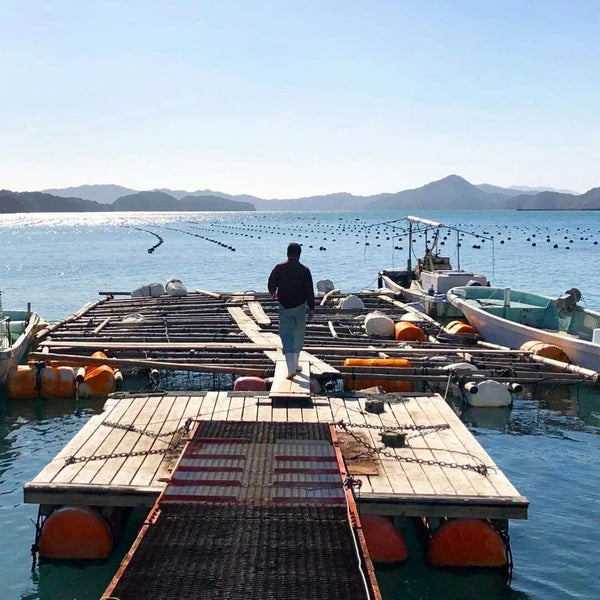
Before we can delve into the nuances of pearl pricing, it's vital to understand the complex process through which pearls arrive in the market.
Pearl cultivation is a painstaking journey that begins with raising mollusks to maturity. This process usually takes two years, filled with constant challenges like protection, nutrition, environmental control, and more - all before any pearls are formed. The cost of time, money, and labor cannot be overstated in this phase.
Despite advancements in technology that allow farmers to cultivate pearls on a much larger scale than ever before, the stark reality is that less than half of all oysters will survive the process of nucleus implantation. If the technicians are exceptionally skilled, hailing from Japan with vast experience and commanding correspondingly large salaries, only up to 50-70% of pearl oysters may survive the operation. And of these survivors, a mere 20% will go on to produce marketable pearls.
Why is the survival rate so low?
Besides the attrition during nucleus implantation, not all oysters recover fully from this invasive operation. In some cases, oysters succumb to diseases. When the saline bays where the harvest is cultivated are flooded with rainwater, diluting the salinity, the pearl oysters may perish if the salinity is not high enough (or too low!). Constant monitoring is required to adjust the depths of the oyster cages according to conditions.
The dreaded "red tide," which is an algae bloom that suffocates marine life and happens every Fall in Florida nowadays, can devastate oyster farms. Japan has developed countermeasures, including special sensors attached to the nets that can detect the level of these phytoplankton in the water and allow timely relocation of the oysters during a red tide. However, this countermeasure also entails additional costs.
In some cases, oysters starve due to a lack of nutrients, while others are preyed upon or infested with parasites. These oysters require treatment – rubbing each one with salt (among thousands!), alternating fresh water and salt water baths to kill surface parasites. Therefore, it's not enough to simply submerge the oysters in the sea and wait for the harvest. They require daily care over one to three years, monitoring their diet, safety, health, and cleanliness. This intensive care translates into man-hours and significant expenses.
Let's reiterate once more: quality pearls CANNOT be cheap!
If they are cheap, then they are freshwater pearls (usually of relatively low quality!) or low-grade saltwater pearls.
Yes, vintage cultured pearls may be relatively inexpensive, but that is due to different pricing dinamics for vintage goods and more often then not in not an ideal condition.
Returning to the production...
So, how many nucleated oysters will produce beautiful pearls?
Only 5% of all surviving oysters will grow perfectly round, shiny pearls with a good color.
15% of the survivors yield pearls of irregular shape and/or good, but not perfect, luster.
The rest? They're of low commercial quality, unsatisfactory, or, alas, simply waste. And yet, the same amount of time, money, labor, and love have been invested in these pearls as in the others. Thus, the remaining pearls have to "compensate" for all the rest.
This stark reality underscores the value and price of high-quality pearls. It's not just about the final product that we see; it's also about the considerable investment and the incredibly low success rate. When you buy a fine pearl, you're not just paying for a piece of jewelry; you're paying for years of care, effort, and the intrinsic risk of the pearl cultivation process.
Understanding these complexities reveals the true value of pearls and provides a solid foundation for comprehending their pricing dynamics.

I will say it over and over again: high guality pearls CANNOT be cheap!
What I see being sold all over the Internet, and what sellers describe as having an "excellent luster" often fails to even qualify as "good," let alone very good or excellent. This judgement can only be formed through a trained eye and a baseline for comparison.
But what happens to the cultivated harvest next?
Next comes the sorting process, where it becomes clear if the technicians' demanded fees were justified. A cut in a gonad even slightly larger than necessary, at the wrong place, or at the wrong time in the oyster's life cycle can lead to death, nucleus rejection, uneven nacre layer on the nucleus, absence of nacre altogether, or a dirty color, among other issues. There are numerous ways in which things can go wrong. There's only ONE way everything can go right.
Sorting is the most important post-harvest process.
Farmers must sort thousands of pearls, separating them by size, shape, color, and luster. Sorting is a complex process, and every commercially viable pearl will go through it numerous times, starting from opening the oyster shell to its final price tag on a store shelf, virtual or physical.
Following the sorting, the pearls must be drilled using precise tools. The operator must be extremely cautious, as the pearl can crack or get damaged at the drilling point. Even if a single pearl is drilled slightly off-center, it disrupts the symmetry of the whole jewelry piece.
The process is incredibly labor-intensive. To find 30-50 (depending on their sizes) pearls for a perfectly matched 16-inch necklace, a pearl sorter must select them from over 10,000 pearls.
This is why pearls, despite being cultivated on relatively large scales, are still quite rare and valuable. It's not just about the physical product, but also about the extensive work, precise craftsmanship, and tireless dedication that goes into creating each pearl. The rarity, the effort, and the beauty combined justify the price of these marine gems.


